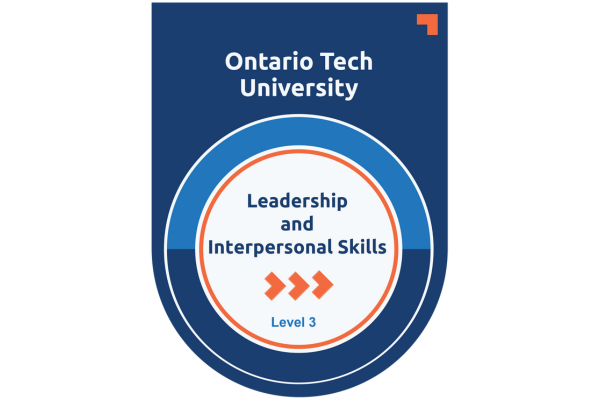
From classroom to boardroom: Communication skills for non-profit leaders in Canada
By: Diana Kawarsky (Continuous Learning Instructor)
Leading a non-profit organization in Canada is no small feat. From securing funding and engaging volunteers to advocating for your cause, the challenges are numerous. Effective communication skills are essential for success in this sector. Transitioning these skills from an educational setting (classroom) to a leadership setting (boardroom) can make all the difference. This blog post will explore how non-profit leaders can master communication skills to excel in their roles.
The power of communication for non-profit leaders
Canadian non-profit leadership demands dedication to the mission and the ability to communicate effectively with diverse stakeholders.
-
Communicating vision and mission
Communicating a non-profit’s vision and mission effectively is key to engaging donors, volunteers, and beneficiaries. Use compelling messaging, emotional appeal, and storytelling to build support and bring your mission to life.
-
Engaging donors and securing funding
Specialized non-profit communication strategies are required for fundraising pitches and grant proposals. Emotional stories foster deeper connections with donors. Showcase your impact and the significance of their contributions, while also adapting your communication for various audiences.
-
Building strong volunteer teams
Motivating and retaining volunteers heavily relies on communication. Foster a sense of community and belonging with inclusive language and by recognizing contributions. Regular check-ins and feedback can keep volunteers engaged and committed to your cause.
-
Advocating for change
Effective communication can influence policy and create social change. You can craft impactful public presentations and media outreach strategies to advocate for your cause. Use data and real-life stories to support your arguments and connect with your audience on a personal level.
Canadian context and cultural considerations
In a diverse country like Canada, interpersonal skills training is essential for cultural sensitivity in communication. Respectful and clear communication, considering regional differences and communication styles, can help bridge gaps. For non-profits operating in bilingual environments, it’s crucial to be proficient in both English and French to reach a broader audience.
Core communication skills for non-profit leaders
Investing in communication skills training for non-profits is vital to equip leaders with the tools they need to effectively convey their mission and engage stakeholders.
Verbal communication skills
-
Public speaking and presentations
Engage and persuade your audience with effective oral communication skills. Storytelling and emotional appeal can make your presentations more impactful and relatable.
-
Interpersonal communication
Building strong relationships with staff, volunteers, and stakeholders is vital for non-profit leaders. Practice active listening and provide constructive feedback to foster a positive organizational culture.
-
Conflict resolution
Conflicts are inevitable in any organization. Develop strategies to handle conflicts effectively within your team and with external partners. Strong conflict-resolution skills can help maintain healthy relationships and collaborations.
-
Persuasive communication
Advocating for your non-profit’s mission and vision requires persuasive communication skills training. Highlight the impact of your work on Canadian communities and negotiate partnerships and funding opportunities confidently.
-
Assertive communication
Balancing respect with clear and confident communication of goals and needs is essential. Advocate for your cause without being aggressive, considering Canadian communication style preferences.
Written Communication Skills
High-impact writing: Develop strong email writing skills by crafting clear, concise, and compelling emails and reports. Focus on tone, clarity, and structure to ensure your messages are understood and well-received.
Grant writing and proposals: Writing successful grant applications requires tailoring proposals to meet different funders’ needs. Highlight your non-profit’s unique strengths and the impact of your work to stand out from the competition.
Digital communication: Leverage social media and digital platforms for outreach. Write engaging content for blogs, newsletters, and social media posts to connect with your audience and promote your non-profit’s mission.
Take the quiz: Are you using the right communication style for your non-profit audience?
Instructions: Answer each question honestly by choosing the option that best reflects your communication approach.
1. When crafting messages for donors, you focus on:
A) Facts and figures showcasing the impact of their donations.
B) Emotional stories about the beneficiaries your organization helps.
2. When presenting to a board of directors, you:
A) Use clear and concise language focusing on data and results.
B) Emphasize the emotional impact of your work and future goals.
3. When communicating with volunteers, you:
A) Provide detailed instructions and clear expectations.
B) Offer a variety of volunteer opportunities and flexible scheduling.
4. In social media posts, you:
A) Share factual updates on your organization’s activities.
B) Use visuals and engaging storytelling to connect with a broader audience.
5. When advocating for policy change, you:
A) Present data and statistics highlighting the need for action.
B) Share personal stories of those affected by the current policy.
6. During fundraising campaigns, you:
A) Emphasize tax benefits and the ROI for donors.
B) Focus on building emotional connections with potential donors.
7. When communicating with government agencies, you:
A) Use formal language and focus on specific policy proposals.
B) Build relationships and highlight the shared values of your organization.
8. When thanking donors, you:
A) Send personalized messages with clear donation breakdowns.
B) Share stories of how their contributions made a difference.
9. When recruiting volunteers, you:
A) Clearly outline the skills and experience required.
B) Emphasize the positive impact volunteers can make.
10. In email communication, you:
A) Keep messages concise and focused on the purpose.
B) Use a friendly and approachable tone to foster connection.
Results:
-
Mostly A’s
Your communication style leans towards a direct and informative approach. While data and clear instructions are valuable, consider incorporating storytelling and fostering two-way communication to connect with your audience on a deeper level and build stronger relationships.
-
Mostly B’s
Your communication style emphasizes connection and engagement. While storytelling and open communication are crucial, remember to balance each with data and clear calls to action to ensure your message resonates and inspires action.
-
Both A & B
Aim for a balance of clarity and emotional connection, adapting to your audience.
Remember: By understanding your strengths and weaknesses, you can tailor your approach to effectively engage with each unique audience for your Canadian non-profit.
Exploring the benefits of Continuous Learning
One of Continuous Learning’s renowned programs is the Not-For-Profit Leadership Certificate. This comprehensive five-course program equips current and aspiring leaders with essential skills and knowledge tailored for the unique challenges of non-profit organizations. Participants will gain insights into effective management strategies, financial stewardship, community engagement, and innovative problem-solving techniques, ensuring they are well-prepared to make a significant impact in the non-profit sector.
Kawarsky, Diana. “From Classroom to Boardroom: Communication Skills for Non-Profit Leaders in Canada”, The Soft Skills Group, 26 Jun, 2024,










